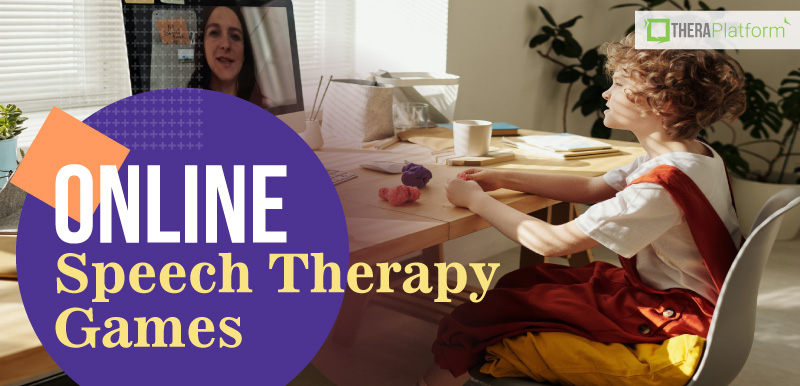F Words

F-word loaded tongue twisters like ‘Five frantic frogs fled from fifty fierce fish’ could be difficult for some of your pediatric clients.
If the client is at least 4 years-old, it might be time to target /f/ words in speech therapy. According to developmental norms, 90% of children are able to produce the /f/ sound by age 3 years and 11 months.
Although the proper pronunciation of /f/ words is considered an earlier developing sound, many children struggle to produce this phoneme. One common error that occurs is when children apply the phonological process of stopping.
Stopping involves the client producing a stop sound (such as /b/) to substitute a fricative sound (like /f/). For example, “bish” for “fish”. Some norms state this phonological process should resolve by age 3.
Because it’s likely you’ll be working on the /f/ sound with younger children, it’s important to be ready with all of the best tips and tricks for eliciting this sound and helping them to articulate /f/ words. That means engaging activities and fun, helpful exercises to help them.
This guide to teaching the /f/ sound will have your client articulating even the toughest tongue twister with /f/ words in no time.
Exercise #1: The Cheerio trick
This exercise for eliciting the /f/ sound in speech therapy is a fun one that’ll give your client tactile feedback while learning the correct placement for the /f/ sound.
- Start by demonstrating the /f/ sound in isolation to the child. Draw the child’s attention to how you gently place your top teeth on your bottom lip. Then, gently produce a slight stream of air through the front teeth. Next, it’s their turn to try.
- Place a Cheerio or similar small, round piece of cereal, on the center of the child’s bottom lip (it should stick there.) Then, ask the child to use his or her top teeth to gently bite over the cereal, holding it there as they make that small “puff of air”.
- Demonstrating how to do this can be helpful for your client. You can also ask them to look into the mirror during this exercise so they can better visualize how the muscles in their mouth are supposed to move when articulating /f/ words. As motivation, the child gets to eat the cereal after each trial.
Once the client has completed several of these exercises, ask him or her to place their mouth in the same position they did before but this time, without a Cheerio. Then, show them how to release that subtle air stream through the front teeth to produce the /f/ sound in isolation.

Download our Ultimate Articulation Guide

Exercise #2: Feel the Air
If your client is producing a stop consonant like /b/ instead of the /f/ sound, here’s a great exercise to try.
- Provide verbal cues for how to place the top teeth on the bottom lip first. Show the child how you do this and put your hand just in front of your face as you make the /f/ sound.
- Talk to the child about how you can feel the air on your hand when you say /f/ words. Next, have your client try it out.
- Ask him or her to get their mouth in the same position as you and to put their hand in front of their face. When the client produces the /f/ sound in isolation, they should feel the release of air on their own hand.
- Remind the child that they don’t need to “turn their voice on” for the /f/ sound, just “use air”. And that if they make the /b/ sound, they won’t feel any air. That’s how they know they’re doing it right and are on their way to saying /f/ words.
Exercise #3: Fee Fi Fo Fum.
Once your client has mastered the /f/ sound in isolation, it’s time to move on to eliciting the sound in syllables.
Try theming your session around the classic story of Jack and the Beanstalk. The giant in this story repeats the well known line, “Fee, Fi, Fo, Fum.”
As you read the story in session or via teletherapy, encourage your client to produce some or all of those syllables with the initial /f/ sound. Some fun extension activities might be having your client draw a picture illustrating a favorite part of the story incorporating /f/ words. Or, helping your client plant some beans in a small pot or cup of soil.
Keep in mind that you may need to probe different syllable positions to determine which one the child is most stimulable for. Some children may be more easily able to produce /f/ in the final position of /f/ words than the initial position, or vice versa.
For example, if the syllable “Fa” causes the client to have difficulty maintaining the /f/ sound, try seeing if he or she is more stimulable for producing the sound in the syllable “Af”.
Visual and verbal cues are key when working on the /f/ sound, as it can help children correct an established motor pattern of an error such as putting their lips together to pronounce /f/ words.
Start 30-day Free Trial and explore TheraPlatform. HIPAA Compliant Video and Practice Management Software for Therapists.
Exercise #4: Fish for Minimal Pairs
Minimal pairs are two words that differ by a single speech sound. They can be very useful in speech therapy because they highlight the difference between two different phonemes for a child. This shows that the sounds can change the meaning of the word.
If you are an SLP working with a child who applies the phonological process of stopping when trying to make the /f/ sound, minimal pairs can be very helpful in increasing the child’s awareness of the /f/ sound.
With a child who uses this type of sound error, you can use minimal pairs with /f/ versus /b/ or /f/ versus /p/. Cut out picture cards of each word into a fish shape, putting a paperclip on it. Shoe the child one minimal pair at a time, asking him or her to use a magnet to pick up or “fish” for the word you say.
Here are some examples:
- Fun/Bun
- Fight/Bite
- Feel/Peel
- Fox/Box
- Fair/Bear
If the child seems to be able to hear the difference between the contrasting sounds, try having him or her say each pair of words.
Word Lists for /F/
Initial Position
1-Syllable
Fun | Face | Far | Fair | Feel |
Fin | Fine | Fix | Four | Five |
Fly | Flag | Fox | Full | Fast |
Farm | Fall | Fork | Fish | Fight |
Food | Fan | Fries | French |
Multisyllabic
Fingers | Fairy | Family | Flower | Follow |
Forest | Forget | Forward | Freezer | Fever |
Funny | Father | Feather | Fussy | Fancy |
Medial Position
After | Afraid | Often | Muffin | Elephant |
Cauliflower | Breakfast | Alphabet | Before | Refrigerator |
Perfect | Sofa | Waffle | Careful | Coffee |
Different | Office | Telephone | Pacifier | Perfume |
Final Position
1-Syllable
Tough | Cough | Leaf | Knife | Roof |
Scarf | Wife | Half | Woof | Laugh |
Elf | Cuff | Beef | Chief | Golf |
Hoof | If | Safe | Stiff | Sniff |
Off |
Multisyllabic
Enough | Giraffe | Photograph | Myself | Sheriff |
Yourself | Handkerchief |
Resources
SLPs working with individuals who have an articulation disorder or phonological disorder like pronouncing /f/ words can utilize TheraPlatform for helpful resources. They offer exclusive games and activities to help your clients articulate sounds and achieve excellent outcomes.
TheraPlatform, an all-in-one EHR, practice management and teletherapy tool was built for therapists to help them save time on admin tasks.
Additionally, TheraPlatform can help manage several aspects of your practice, from scheduling to documentation to invoicing. Consider a 30-day free trial of TheraPlatform today.
More resources
- S words
- R words
- Online speech therapy games
- Therapy resources and worksheets
- Therapy private practice courses
- Ultimate teletherapy ebook
- The Ultimate Insurance Billing Guide for Therapists
- The Ultimate Guide to Starting a Private Therapy Practice




